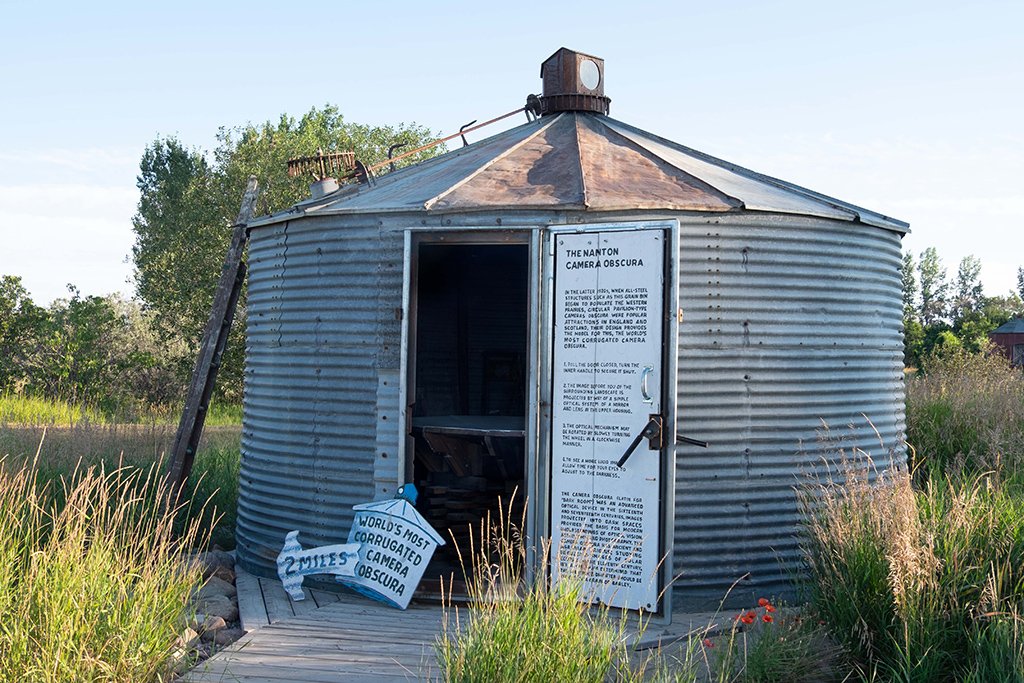Nanton Camera Obscura
2018
permanent interactive sculpture (camera obscura), documentation
Commissioned by the University of Lethbridge in Lethbridge, Alberta, this project is now a permanent artwork at the Coutts Centre for Western Canadian Heritage. Launched in June 2011 through a gift from the late Dr. Jim Coutts to the University, the Coutts Centre’s goal is to preserve heritage that is central to Western Canadian culture. East of Nanton, Alberta, the Coutts Centre is a quarter section of land on the more than 100-year-old property that once belonged to Dr. Coutts’s grandfather. It includes the original homestead, extensive gardens and restored outbuildings. This property enables the University of Lethbridge to treat the Coutts Centre as a living classroom, for students, faculty and visitors to make use of the natural setting to study the history, artwork, ecosystems and geography associated with the area. Josephine Mills, Director/Curator of the University of Lethbridge Art Gallery, was instrumental in the realization of on-site contemporary artworks on the property.
For this project, Donald Lawrence converted a metal grain bin from the 1920s located on the Coutts property to a camera obscura with a lens at the top and a wooden table inside. In keeping with historical prototypes, the projection table is dish-shaped. Large for its eight-foot (2.4 metre) diameter, it was created in two halves by since- graduated Thompson Rivers University visual art students Garnet Dirksen and Levi Glass. Viewers can enter the silo and rotate the lens 360 degrees to view the property and the expansive prairies and sky, with the front ranges of the Rocky Mountains in the background, all in live motion.
The utilitarian nature of the gearing is inspired by a planetarium constructed in the home of wool merchant Eise Eisinga in the Netherlands in the 1770s and 80s. In 2007, Lawrence created detailed studies of Eisinga’s Planetarium. He was interested in the way Eisinga drew upon amateur interests in astronomy to create an elaborate demonstration apparatus of the solar system to share with visitors to his home. In creating his mechanism, Eisinga was himself likely inspired by the complex system of wooden gearing employed in the construction of windmills.
This is among the first works to be realized by a contemporary, nationally recognized artist at the Coutts centre, integrating contemporary practices within a heritage context. As with much of Lawrence’s work, this project offered Lawrence an opportunity to create an artwork in response to a specific site and the surrounding landscape and to offer viewers a sensorial and participatory experience of a walk-in camera obscura within this context.
Nanton Camera Obscura, 2019 - Coutts Centre, Nanton, AB (collection: University of Lethbridge)














